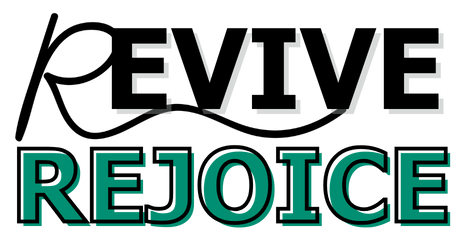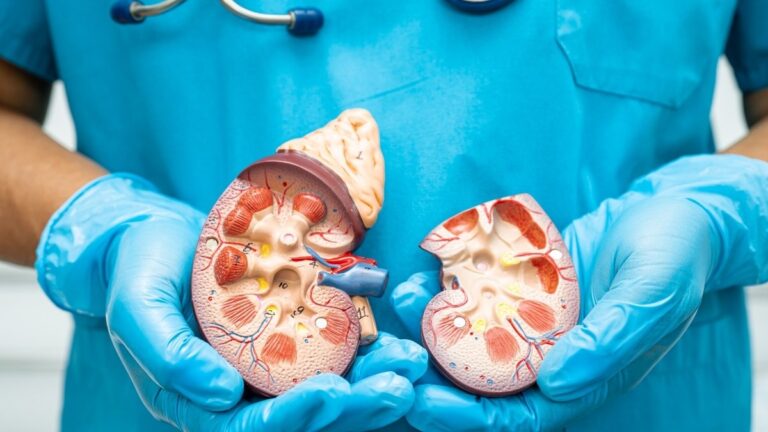A Geriatrician Changed My Diet for 60 Days—These Were the 3 Biggest Surprises (That Actually Worked)
At 58, I thought I was eating healthy. I’d followed the same balanced diet for decades—lean proteins, salads, whole grains. But my energy dragged, clothes fit tighter, and bloodwork showed prediabetes.
Like many over 50, I followed nutrition advice from my 30s, unaware aging bodies need different fuel. When I consulted a geriatrician about dietary changes for aging, three surprising recommendations transformed everything. In 60 days, lab work improved and energy returned.
This reveals the biggest dietary shifts that made measurable differences, why older adult nutrition matters after 60, and actionable steps to implement each change with real results.
Why I Consulted a Geriatrician About My Diet
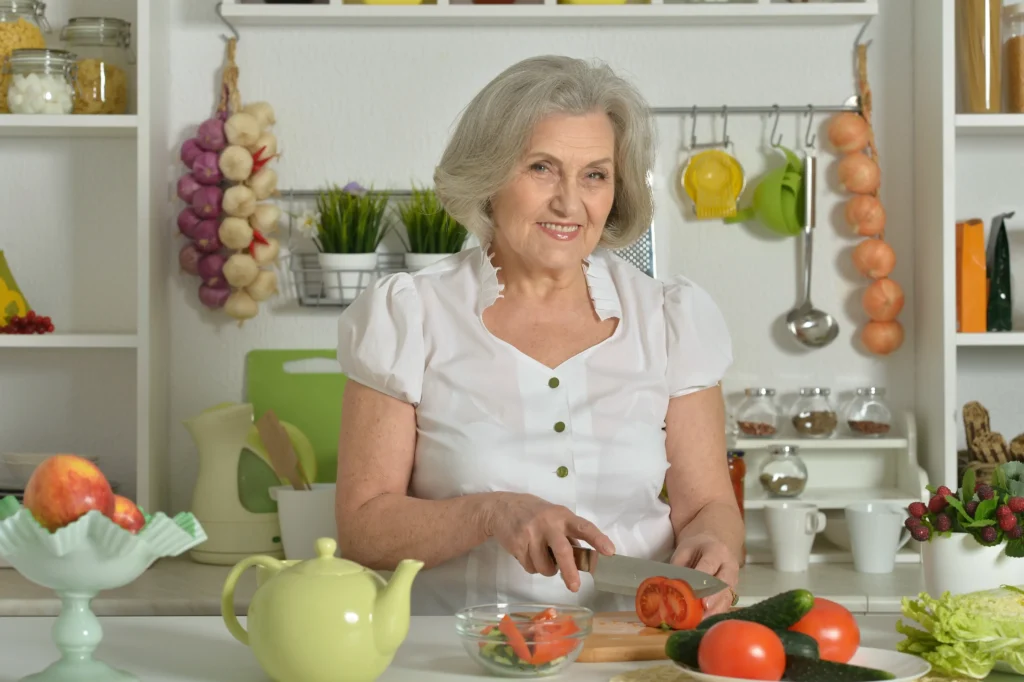
Most people don’t realize this: your body’s nutrition needs change drastically after 50. Not a little. Drastically.
The dietary guidelines from 2020-2025 have specific recommendations for adults 60 and older. Different from what younger adults need. Most regular doctors don’t mention this because they’re not specialists in geriatric nutrition.
Here’s what shocked me: Women over 60 need 1,600-2,200 calories daily. Men need 2,000-2,600. That’s roughly 200 fewer calories per day than you needed at 40. But your nutrient needs stay the same or actually increase.
You need more nutrients from fewer calories. That’s the challenge.
I scored only 63 out of 100 on something called the Healthy Eating Index. That’s about average for older Americans. Which means most of us are getting this wrong together.
When Dr. Martinez reviewed my food diary, she found three problems immediately.
My protein intake looked okay on paper. But I was eating it all wrong. My fiber intake was average—which meant it was too low. And my eating habits were making everything worse in a way I never expected.
Surprise 1. I Needed 50% More Protein Than I Thought
My Protein Wake-Up Call!
Before: The “Dinner Dump”
My body could only use 30g of that dinner. The rest? Wasted!
After: The “Even Spread”
Targeting 25-30g per meal meant my body could use it all!
The Results Blew Me Away!
Week 3: Energy UP!
My afternoon slump disappeared.
Week 6: Stronger!
Getting stronger, faster.
Week 8: Gained Muscle!
Lost 7lbs fat but *gained* lean tissue.
Making It Easy: My Go-To Foods
When Dr. Martinez reviewed my food diary, she immediately circled my dinner entries.
“You’re eating nearly all your protein here—about 45 grams at dinner and maybe 10 at breakfast.” She explained that while my daily total wasn’t terrible, my body couldn’t use most of it.
Here’s the science part, but I’ll keep it simple: Your body can only use about 25-30 grams of protein at one time to build and maintain muscle. After that, the excess gets used for energy or stored as fat.
As you age, you develop something called “anabolic resistance.” Your muscles become stubborn. They need more protein per meal to trigger muscle growth and maintenance than they did when you were younger.
The standard recommendation is 0.8 grams of protein per kilogram of body weight. But research shows older adults need 1.0-1.2 grams per kilogram. That’s 25-50% more.
Here’s the kicker: 46% of adults over 51 don’t meet even the basic protein recommendations.
Muscle loss starts in your 40s. It accelerates after 50. You lose about 3-8% of your muscle mass per decade after 30. This speeds up after 60.
The Reality Check: What This Actually Cost Me (And Budget-Friendly Swaps)

Let’s talk about the elephant in the room. Cost.
When Dr. Martinez handed me the protein and fiber recommendations, my first thought was, “Great, now I need to shop at Whole Foods.”
Here’s what I actually spent. And the budget swaps I discovered that work just as well.
What I Actually Spend Per Week
Protein additions:
- Greek yogurt (store brand): $4-5 for 32 oz = 8-10 servings
- Eggs: $3-4 per dozen (lasts all week)
- Canned tuna: $1-2 per can (bought 4-6 cans)
- Rotisserie chicken: $6-8 (gives me 4-5 meals)
- Dried lentils: $2 per pound (makes 10+ servings)
Weekly protein increase: $12-18
Fiber additions:
- Wheat bran (1 pound): $3-4 (lasts a month)
- Barley (bulk section): $2-3 per pound
- Oats (store brand): $3 for the big container
- Frozen vegetables: $1-2 per bag
My Money-Saving Strategies
Buy store brands for basics. The Greek yogurt at Target is identical to Chobani. Same protein. Half the price.
Purchase proteins on sale and freeze. When chicken goes on sale, I buy three packs and freeze them. Same with ground turkey.
Use dried beans and lentils instead of canned. Saves about 50%. Takes longer to cook, but I make a big batch on Sunday.
Shop ethnic grocery stores for grains and legumes. Indian and Middle Eastern markets have bulk barley, lentils, and chickpeas for a fraction of the price.
Buy frozen vegetables. They’re picked at peak ripeness. No waste. Cheaper. Often more nutritious than “fresh” vegetables that sat in trucks for a week.
Rotisserie chickens are your friend. At $6-8, this is the cheapest prepared protein per ounce. I use it for 3-4 meals.
Where to Splurge vs. Save
Save on:
- Dairy (store brands are identical)
- Frozen produce
- Canned fish
- Dried grains and beans
Splurge on:
- Fresh fish occasionally (once a week)
- High-quality eggs (if it matters to you)
- Your favorite fresh produce
The Surprise Savings
Here’s the real talk: The social eating component actually SAVED me money.
Before, I’d eat out alone 3-4 times a week. $15-25 per meal. Call it $75-100 weekly.
Now I meal-prep with my neighbor. We each cook once, share the meal. We spend about $8-10 per person per meal.
Three months in, I’m spending LESS on food than before while eating better quality meals.
Surprise 2. Fiber Wasn’t Just About Digestion—It Prevented My Diabetes Risk
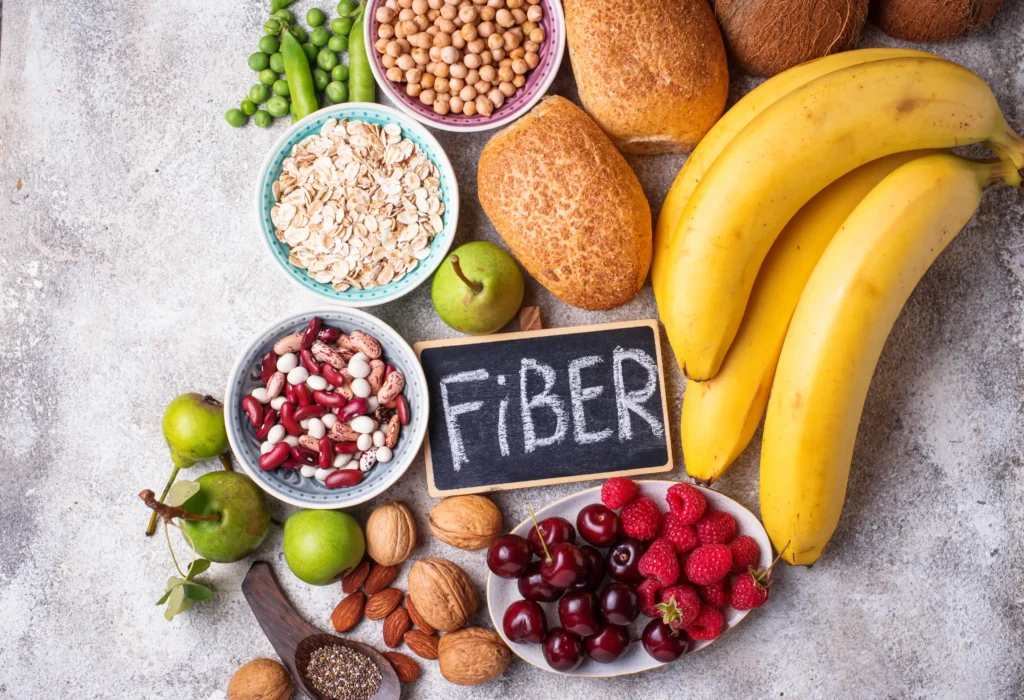
My prediabetes diagnosis was the wake-up call.
Dr. Martinez didn’t just say “eat more fiber.” She explained that specific types of fiber could literally reduce my diabetes risk by up to 30%.
The research was clear. This wasn’t about regularity. It was about preventing disease.
The Science (The Simple Version)
My Fiber Fix: How I Beat Prediabetes
Before
12-15g
Daily Fiber
After
30g+
Daily Fiber
The Results (60 Days)
- HbA1c Dropped: 5.9% ➔ 5.6%
- No more 3 PM energy crash
- Lost 7 pounds (without trying)
My Biggest Swaps
- White Rice ➔ Barley (+5.4g)
- Oatmeal ➔ Oatmeal + Bran (+6g)
- Apple Juice ➔ Whole Apple (+4g)
Fiber is a carbohydrate. But unlike other carbs, it doesn’t spike your blood sugar.
Here’s why that matters: When you eat white rice or white bread, your blood sugar shoots up. Your pancreas has to pump out insulin to bring it down. Do this enough times, and your cells stop responding to insulin properly. That’s type 2 diabetes.
Fiber slows everything down. It makes your intestines absorb sugar more slowly. Your blood sugar stays stable. Your pancreas doesn’t have to work as hard.
There’s more. Fiber feeds the good bacteria in your gut. Those bacteria produce compounds that make your cells more sensitive to insulin. Better insulin sensitivity means lower diabetes risk.
The research shows that increasing your fiber intake by just 15 grams daily significantly reduces your risk of premature death. High intakes of whole grains and insoluble cereal fibers provide the biggest protection against diabetes.
Target for diabetes prevention: 35 grams of fiber daily.
What I Was Doing Wrong:
Before: 12-15 grams of fiber daily. That’s actually average for Americans. Which means it’s not enough.
Women over 50 need 21 grams daily. Men need 30 grams. For diabetes prevention, you want even more.
Only 5% of people consume their daily fiber quota. I was eating more than most people and still falling short.
What Changed:
After: 30 grams of fiber daily, focusing on insoluble fiber from whole grains.
Morning: Switched from regular oatmeal to bran cereal. That’s 6 grams of fiber per quarter cup. Mixed it into yogurt or ate it with milk.
Lunch and Dinner: Replaced white rice with barley. White rice has 0.6 grams of fiber per cup. Barley has 6 grams per cup. That’s 10 times more fiber.
Snacks: Added fruit. A pear has 5 grams. An apple with skin has 4 grams.
Secret weapon: Added a quarter cup of wheat bran to smoothies. That’s 6 grams of fiber that you can’t even taste.
The Results:
Day 60: HbA1c dropped from 5.9 to 5.6. Out of prediabetic range.
Week 3: My 3 PM energy crash disappeared. Turns out stable blood sugar means stable energy.
Week 4: Digestive regularity improved. Yes, this part too.
Ongoing: I feel fuller on fewer calories. Lost 7 pounds without trying.
Surprise 3. Eating Alone Was Sabotaging My Nutrition
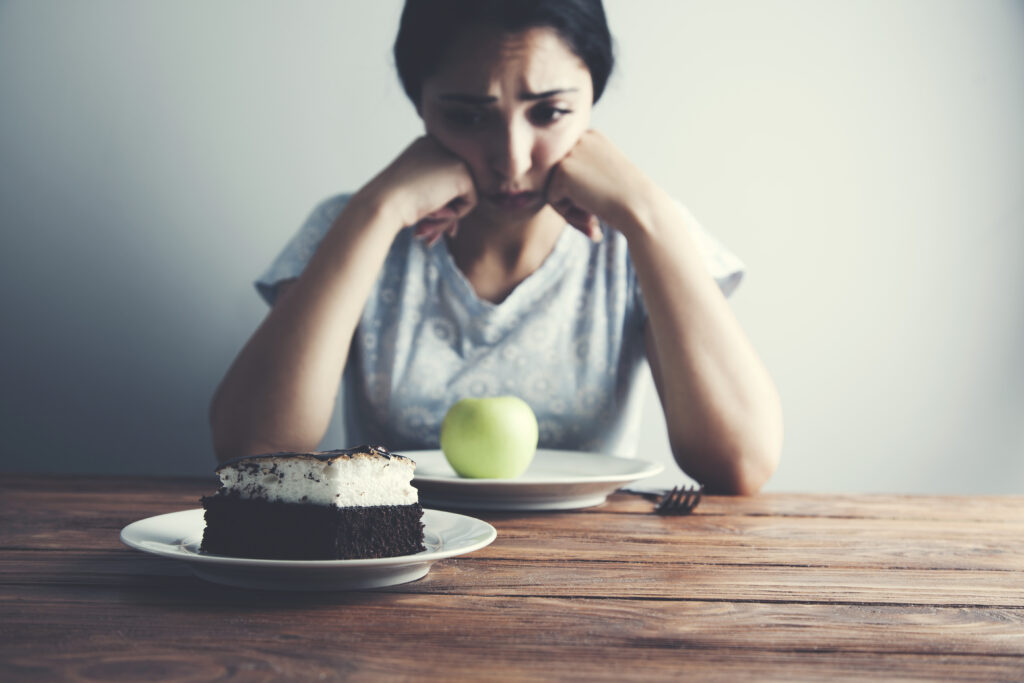
I live alone. Dr. Martinez asked an unexpected question: “How often do you eat with other people?”
When I admitted it was maybe once a week, she said, “That’s probably affecting how much and what you eat more than you realize.”
The Science of Eating Alone
People eat more when dining with others. It’s called the social facilitation effect.
But it’s not just about quantity. It’s about quality too.
Research shows that socially isolated older people eat fewer meals daily. They consume less protein. They eat fewer fruits and vegetables. Their overall diet quality drops.
About 32% of isolated older adults never share meals with anyone. And 42% report inadequate food intake.
Why? When you eat alone, you lose motivation to cook “proper meals.” Tea and toast becomes dinner. A handful of crackers becomes lunch.
Loneliness actually changes how your brain processes food cues. You become less interested in eating. You skip meals without noticing.
What I Was Doing
Living alone for three years, I’d fallen into bad habits.
Breakfast: Coffee, maybe toast. Lunch: Whatever was easy. Dinner: Often just scrambled eggs or a sandwich.
I’d lost interest in cooking for one person. It felt like too much effort.
What Changed
Weekly meal prep group: I joined a cooking class at the community center. We meet Thursday afternoons, cook together, and everyone takes home meals.
Scheduled meals: Video calls with my daughter and her family during dinner, three times a week. We eat “together” while catching up.
Walking group breakfasts: Joined a Saturday morning walking group. We walk for 30 minutes, then have breakfast at a local cafe.
Meal swaps: Arranged with my neighbor to cook for two, alternating days. I cook Monday and Wednesday. She cooks Tuesday and Thursday. Friday we’re on our own.
The Results
This was the surprise that surprised me most.
Increased appetite: I actually looked forward to meals again.
Better food choices: When you’re cooking for someone else or eating with others, you make more effort. I started making real meals instead of cobbling together snacks.
More diverse foods: My neighbor makes dishes I wouldn’t try on my own. I’ve eaten more vegetables in three months than I did all last year.
Less “tea and toast” dinners: Down to maybe once a week when I’m genuinely too tired.
The Mental Health Bonus
Eating alone is linked to depression risk. Especially for men. Especially for people living alone.
I didn’t realize how isolated I’d become until I wasn’t anymore.
The Saturday breakfast group has become the highlight of my week. The video dinners with my daughter mean I actually use my good plates instead of eating over the sink.
Making Social Eating Work
You don’t need to share every meal. Even 2-3 social eating occasions per week made a difference for me.
Easy options:
- Video call with family during one meal
- Coffee with a friend (counts as social food time)
- Join a community meal program
- Meal prep with a neighbor
- Walking group + breakfast after
For introverts (I’m one): Start with one social meal per week. Choose comfortable settings. A friend’s house beats a large group dinner.
Quality over quantity. One meaningful shared meal beats three uncomfortable ones.
The First 2 Weeks: What Nobody Tells You About Adjusting Your Diet
Here’s what the research doesn’t tell you: Changing your diet after 50 isn’t smooth sailing.
The first two weeks were rough. I experienced some unexpected challenges that almost made me quit.
Here’s what happened. And how I solved each problem.
Challenge #1: Digestive Discomfort from Fiber Increase

What happened: Days 3-5 were uncomfortable. Bloating, gas, feeling uncomfortably full.
I’d jumped from 12 grams to 30 grams of fiber overnight. Bad idea.
The science: Sudden fiber increases cause bloating, gas, constipation, or diarrhea. Your gut bacteria need time to adjust. Most people experience temporary digestive changes when fiber intake doubles.
The solution:
- Increase fiber by 5 grams per week, not all at once
- Drink 8-10 glasses of water daily (fiber needs water to work properly)
- Take a walk after meals (helps digestion)
- Start with soluble fiber from oats, then add insoluble fiber
- Give your gut 2-3 weeks to adapt
Timeline: My digestive issues resolved by day 14.
Challenge #2: Feeling Too Full to Hit Protein Goals

What happened: The fiber made me so full, I struggled to eat 25-30 grams of protein per meal. By dinner, I had no appetite.
The science: Fiber keeps you feeling full longer. That’s great for weight management. But it can work against protein goals initially.
The solution:
- Eat protein FIRST at each meal, before filling up on fiber
- Use liquid protein (smoothies with protein powder)
- Spread protein across 4-5 smaller meals instead of 3 large ones
- Choose dense protein sources like Greek yogurt and cottage cheese
- Consider different timing: early breakfast, mid-morning snack, lunch, afternoon snack, lighter dinner
Timeline: I adjusted by week 3.
Challenge #3: Social Eating Felt Awkward at First

What happened: Joining a community meal group felt forced. I’m an introvert. The first gathering, I ate quickly and left.
The solution:
- Start with ONE social meal per week, not three
- Choose comfortable settings (friend’s house vs. large group)
- Try video calls with family first (less intimidating)
- Meal prep groups = social time + practical output
- Walking + coffee dates count as social food time
- Quality over quantity
Timeline: Felt natural by week 6.
Challenge #4: Grocery Shopping Overwhelm
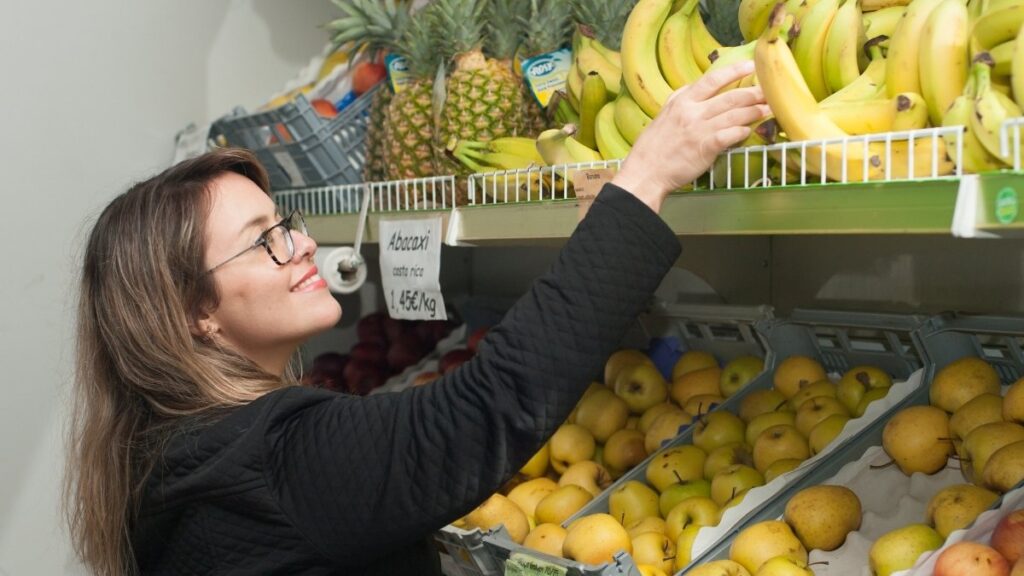
What happened: Standing in the grocery store trying to calculate protein and fiber content was exhausting.
The solution:
- Create a master shopping list of approved foods
- Shop the same items for 2 weeks while adjusting
- Use an app like MyFitnessPal for the first week only
- Batch prep protein sources on Sundays
- Keep it simple: rotate between 7-10 favorite meals
Quick-Reference Shopping List
Quick-Ref Shopping List
Dairy Case
- Greek Yogurt (17-20g)
- Cottage Cheese (28g)
- Eggs (6g each)
- 2% Milk (8g)
Meat & Fish
- Rotisserie Chicken (25g)
- Ground Turkey (22g)
- Canned Tuna (20g)
- Frozen Salmon (29g)
Dry Goods (Fiber)
- Wheat Bran (6g)
- Oats (4g)
- Barley (6g)
- Lentils (8g)
- Whole Wheat Pasta (6g)
The Reality Check
The Changes That Didn’t Make the List (But Still Matter)
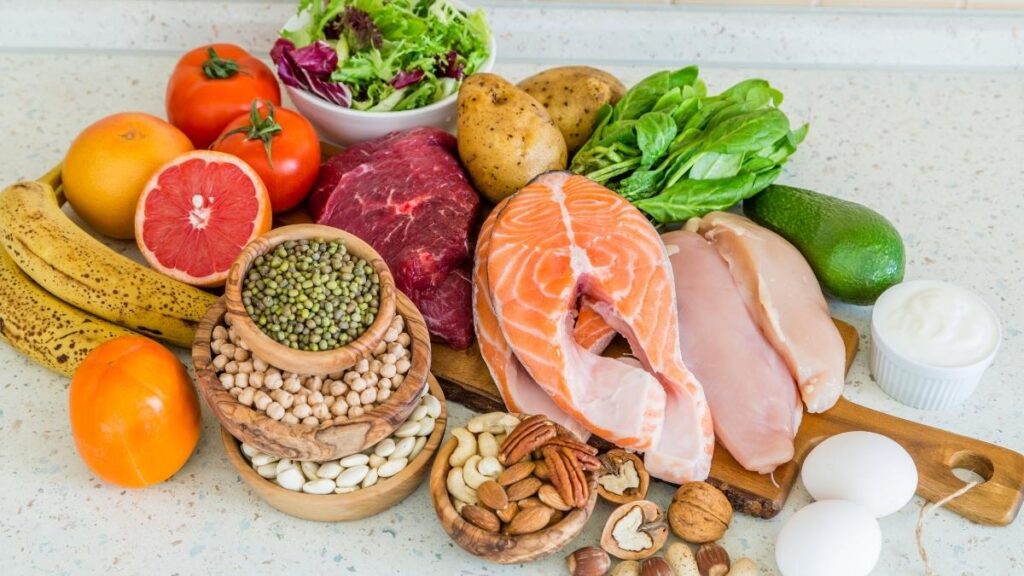
Dr. Martinez recommended other changes too. They weren’t “surprising,” but they were important.
Calcium and Vitamin D
Calcium needs jump after 50. Women 51+ need 1,200mg daily. Men 71+ need 1,200mg.
Vitamin D absorption decreases as you age. Most older adults are deficient.
I added a calcium + vitamin D supplement. Got more sun. Started eating more dairy.
Hydration
Older adults lose their sense of thirst. You can be dehydrated without feeling thirsty.
I set phone reminders to drink water. Aim for 8 glasses daily. More on hot days or when exercising.
Smaller, More Frequent Meals
Instead of three large meals, I shifted to 4-5 smaller meals. Easier on digestion. Kept energy more stable.
Reducing Added Sugars
Cut back on refined flour and added sugars. This reduced inflammation markers in my bloodwork.
Switched from sweetened yogurt to plain with berries. Ditched sugary granola bars for nuts.
Focus on Colorful Vegetables
Dr. Martinez said, “Eat the rainbow.” Different colored vegetables provide different antioxidants.
I started buying whatever looked good that week. Purple cabbage. Orange peppers. Dark leafy greens.
How to Start: Your 4-Week Implementation Plan
Don’t try to change everything at once. I learned that the hard way.

Here’s a realistic plan.
Week 1: Protein Assessment
Day 1-3: Track your current protein intake for three days. Write down everything you eat. Look up protein content.
Day 4: Calculate your needs. Take your weight in pounds. Multiply by 0.45-0.55. That’s your daily protein target in grams.
Day 5-7: Identify breakfast protein boost options. Buy high-protein staples: Greek yogurt, eggs, cottage cheese, canned tuna.
Week 2: Fiber Foundation
Day 1-2: Swap one white grain for whole grain daily. White rice → barley. White bread → whole grain.
Day 3-4: Add a quarter cup wheat bran to your morning routine. Mix into oatmeal, yogurt, or a smoothie.
Day 5-7: Increase water intake. Fiber needs water. Aim for 8-10 glasses daily. Note your energy levels in a simple journal.
Week 3: Social Strategy
Day 1-3: Schedule 2 shared meals this week. Video call with family. Coffee with a friend. Lunch with a neighbor.
Day 4-5: Join one group activity involving food. Community meal program. Cooking class. Walking group with breakfast after.
Day 6-7: Set up a regular video call meal with distant family. Make it a weekly thing.
Week 4: Fine-Tuning
Day 1-3: Adjust protein at each meal to hit 25-30 grams. Redistribute if needed.
Day 4-5: Increase fiber to 25-30 grams daily. You should be close by now.
Day 6-7: Maintain 2-3 social eating occasions. Assess overall changes. How’s your energy? Digestion? Mood?
Starting This Week
Pick ONE thing from Week 1. Just one.
Track your protein for three days. Or buy Greek yogurt and eggs.
Next week, add one thing from Week 2.
Small, consistent changes beat dramatic overhauls that you quit after two weeks.
My Lab Work Before & After: The Numbers That Convinced My Doctor
My 60-Day Lab Results: Click to See
HbA1c (Diabetes) 5.9% → 5.6% ›
Fasting Glucose 108 → 95 mg/dL ›
Total Cholesterol 218 → 192 mg/dL ›
LDL (Bad Cholesterol) 142 → 118 mg/dL ›
HDL (Good Cholesterol) 48 → 56 mg/dL ›
Triglycerides 165 → 128 mg/dL ›
hs-CRP (Inflammation) 3.2 → 1.8 mg/L ›
Body Weight 182 → 175 lbs ›
When I returned to Dr. Martinez for my follow-up, she pulled up my bloodwork side-by-side with the baseline from 60 days earlier.
“This is why I recommend these changes,” she said, pointing at the screen.
The numbers told a story that surprised even me.
Here’s what changed. And what these markers actually mean for your health.
Additional Measurements (Not Labs)
| Measure | Before | After | Change |
|---|---|---|---|
| Waist circumference | 38 inches | 35 inches | -3 inches |
| Resting heart rate | 78 bpm | 68 bpm | -10 bpm |
| Blood pressure | 132/84 | 118/76 | Improved |
| Energy level (self-rated 1-10) | 5/10 | 8/10 | +3 points |
| Sleep quality (self-rated) | 6/10 | 8/10 | +2 points |
What My Doctor Said
Dr. Martinez was genuinely impressed.
“These aren’t marginal changes. Your HbA1c improvement alone reduces your risk of progressing to diabetes by about 58% based on the research. The cholesterol changes reduce heart disease risk. And maintaining muscle mass during weight loss? That’s the holy grail for patients over 50.”
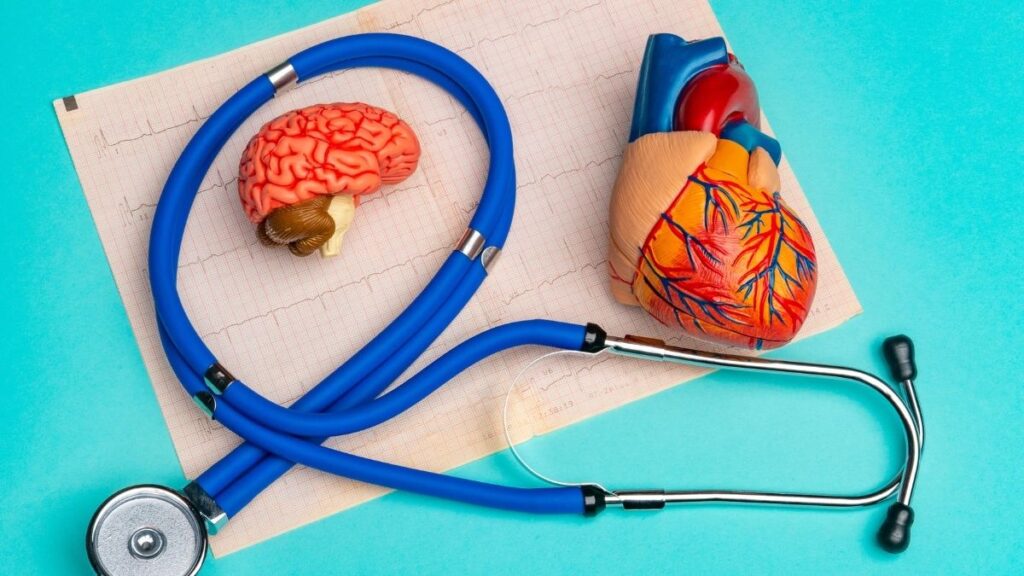
She also noted that my inflammation marker drop correlated with the joint stiffness improvement I’d mentioned. Something I hadn’t even connected to diet.
How to Track Your Own Progress
Baseline Labs to Request: (Most insurance covers these)
- Complete metabolic panel (includes glucose)
- Lipid panel (cholesterol, triglycerides)
- HbA1c
- hs-CRP (inflammation marker)
- Vitamin D level (many older adults are deficient)
Timing:
- Get baseline before starting changes
- Retest at 8-12 weeks (60-90 days)
- Some markers like HbA1c reflect a 3-month average
Track at Home:
- Weekly weight (same day and time each week)
- Monthly waist circumference
- Daily energy levels (simple 1-10 scale)
- Food diary for first 2 weeks only
The Real Changes Nobody Talks About

Sixty days later, my energy is back. My bloodwork improved. And meals are something I look forward to again.
The best part? These aren’t temporary diet rules. They’re sustainable adjustments that work with my body’s changing needs.
I’m not following a fad diet. I’m not restricting entire food groups. I’m not counting every calorie or feeling deprived.
I’m eating more protein than before. More fiber than before. More meals with other people.
And I feel better than I have in five years.
What Actually Matters

The three changes that made the biggest difference:
Protein timing: Not just total amount, but 25-30 grams at each meal. This single change preserved my muscle mass while I lost weight.
Fiber for disease prevention: Not just digestion. The 30 grams daily moved me out of prediabetic range and stabilized my energy.
Social eating: The most surprising change. Affected both quantity and quality of my nutrition. Made eating enjoyable again.
Start Small
You don’t need to change everything at once.
Start with one change this week. Track your protein for three days. Or schedule one shared meal with a friend.
Small, consistent changes based on science—not trends—are what create lasting results after 50.
Your body’s needs have changed. Your diet should too.
The question isn’t whether to make these changes. It’s when.
The Bottom Line
Numbers don’t lie.
These weren’t minor tweaks. They were clinically significant improvements that reduced my disease risk across multiple categories.
The data convinced me these changes weren’t just “healthy habits” but actual medical interventions.
Your results will vary based on your starting point. But tracking these same markers gives you objective proof of whether these dietary changes are working for YOUR body.
Important: Always work with your healthcare provider. These results reflect MY experience with MY starting health status. Your baseline, medications, and health conditions are unique. Use this as motivation to track your own progress—not as a guarantee of identical results.

